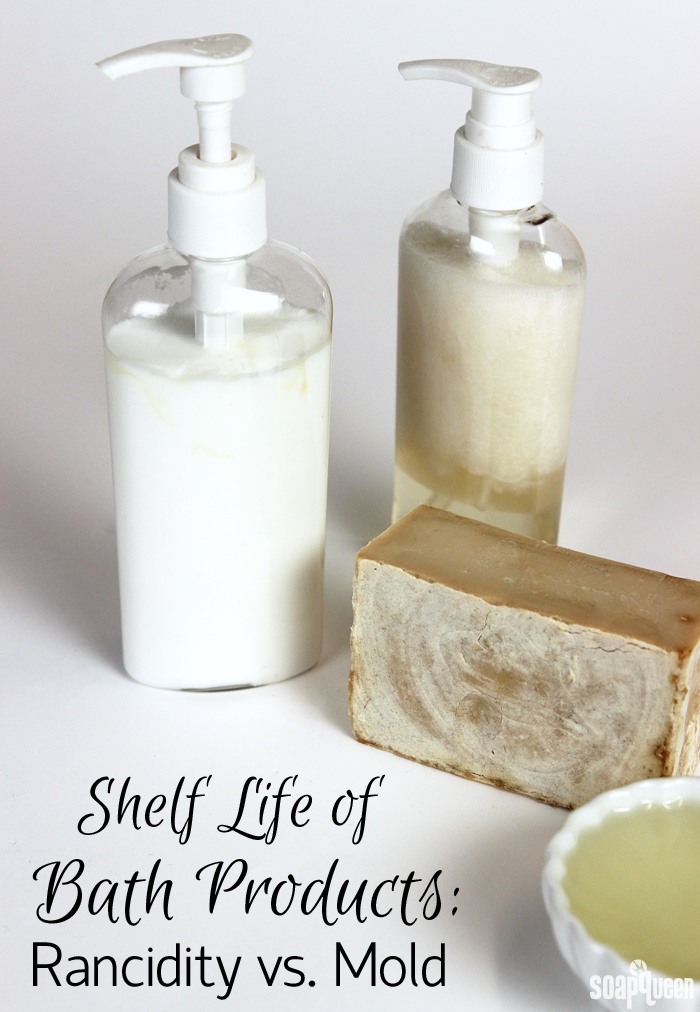
Just like food, bath and beauty ingredients have a recommended shelf life. It's important to know how long your products will last, especially if you sell or give them away.
Let's first talk about the difference between mold and rancidity. Mold and bacteria grows in products that contain water, like lotion or emulsified scrubs. They need a preservative to prevent that. Learn more about preservatives and how to use them here. They don't protect fresh ingredients, like milk and fruit purees, from growing mold in products like lotion, balms, and melt and pour soap.
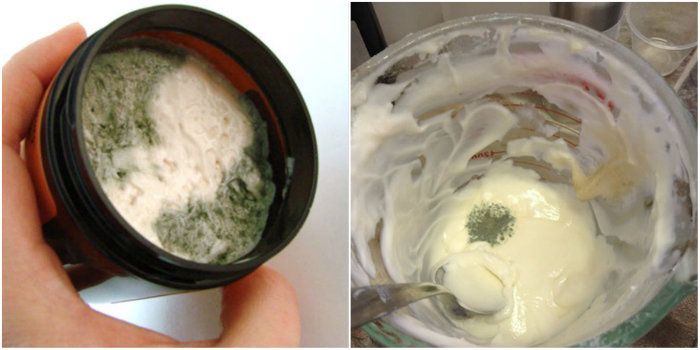
Rancidity is the deterioration of oils and fats. There are several types, including oxidative rancidity, hydrolytic rancidity, microbial rancidity, and autooxidation. Rancidity is a sign of an ingredient that's past its shelf life, while mold and bacteria can grow at any time.
If your product contains a preservative, it won't grow mold/bacteria - but the ingredients can still go rancid. On the flip side, mold and bacteria can grow without any rancid ingredients if the product contains water. For example, let’s say you made a lotion using excellent manufacturing practices and included a preservative. It shouldn't grow mold or bacteria. However, it also contains sunflower oil, which has 6-month shelf life. After that time, your lotion may start to change color or smell unpleasant.
Many products and ingredients are not necessarily unsafe to use past their shelf life. But rancid ingredients may smell, change color, or lose effectiveness. If you notice any of those changes, we recommended throwing it away to be on the safe side. This is particularly true for leave-on products like lotion, or products used around the eye or lip area, like shadows or balms. If your product starts growing mold, throw it away immediately. It's unsafe for use.
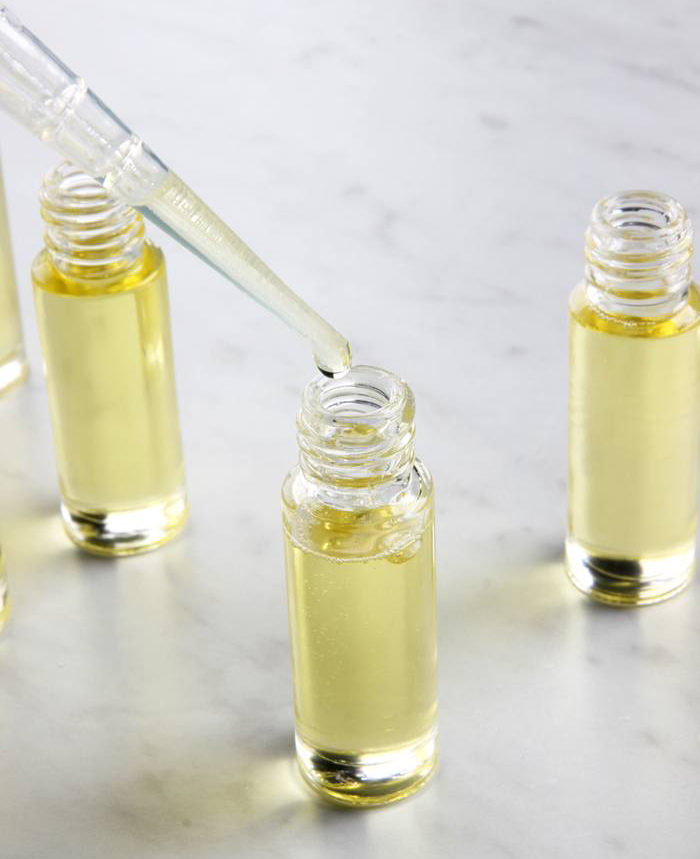
Figuring out the shelf life of various products can be a little tricky. Some ingredients, like fragrance oils and colorants, have an extremely long shelf life. Others, like certain fixed oils, may only last a few months. Once you combine ingredients, the shelf life of the product becomes the same as the ingredient with the shortest shelf life.
For example, let’s take a look at the oils in the Wild Rose Soap Project. While each one varies, the shelf life of the soap is 6 months because of the sunflower oil. If you removed that oil, it would be 1 year - the next shortest shelf life of the sweet almond oil.
Wild Rose Soap (6 month shelf life)
2 oz. Castor Oil (2 years)
16.3 oz. Coconut Oil (18 months)
20.8 oz. Olive Oil (2 years)
13 oz. Palm Oil (1.5 years)
6.5 oz. Sunflower Oil (6 months)
6.5 oz. Sweet Almond Oil (1 year)
When it comes to cold process soap, a great indicator of rancid oils is “dreaded orange spots," also known as DOS. They can show up months or years after the soap has been made. Several factors increase the likelihood of DOS, but the most common is rancid oils. The bars are fine to use, but they usually smell quite unpleasant.
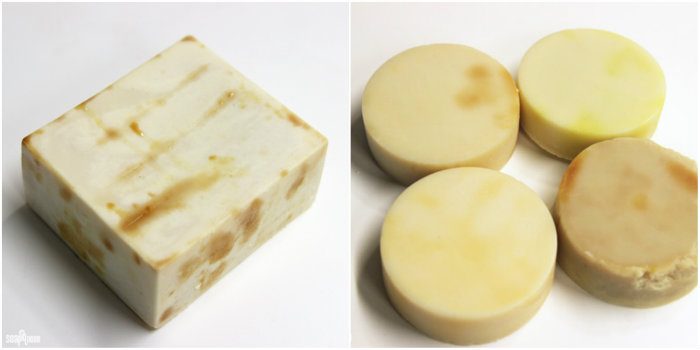
The pH level of cold process soap doesn't allow mold or bacteria to grow. Because of this, the shelf life of cold process soap is essentially when the bars develop DOS. Find a list of oil shelf lives here. You can also add Vitamin E oil to make your bars last a little bit longer.
Another unique example of shelf life is bath bombs. They're made with citric acid and baking soda. Over time, citric acid loses its potency if it's exposed to air. We recommend storing bath bombs in an airtight container in a cool, dry place and using them within 6 months for the best results.
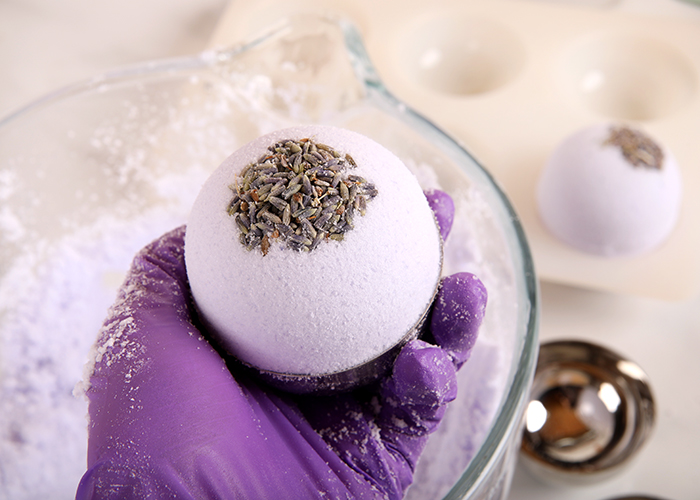
Keep in mind that shelf lives are an estimate. Other factors affect it, like how products are stored. We recommend keeping them in a cool, dry place for the best results. It also helps to label all your oils with a use-by date. If you're not sure if your product is past its prime, throw it out to be on the safe side.
